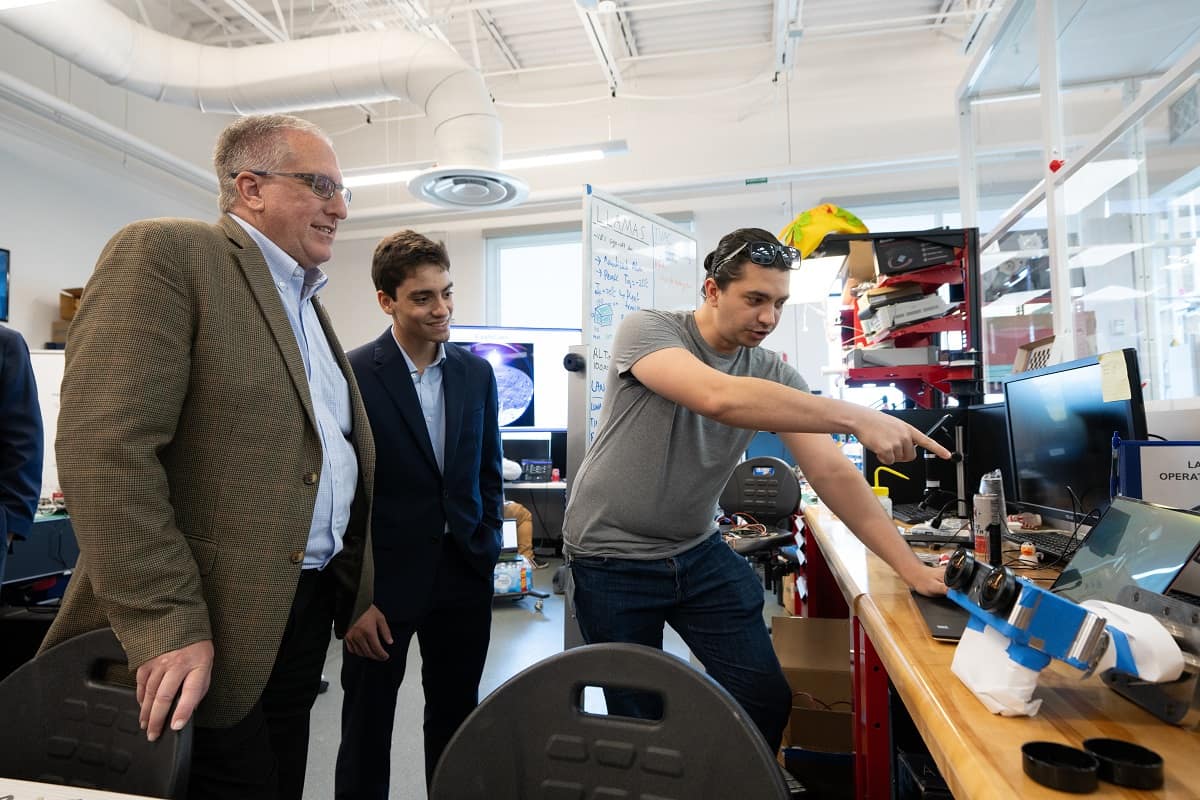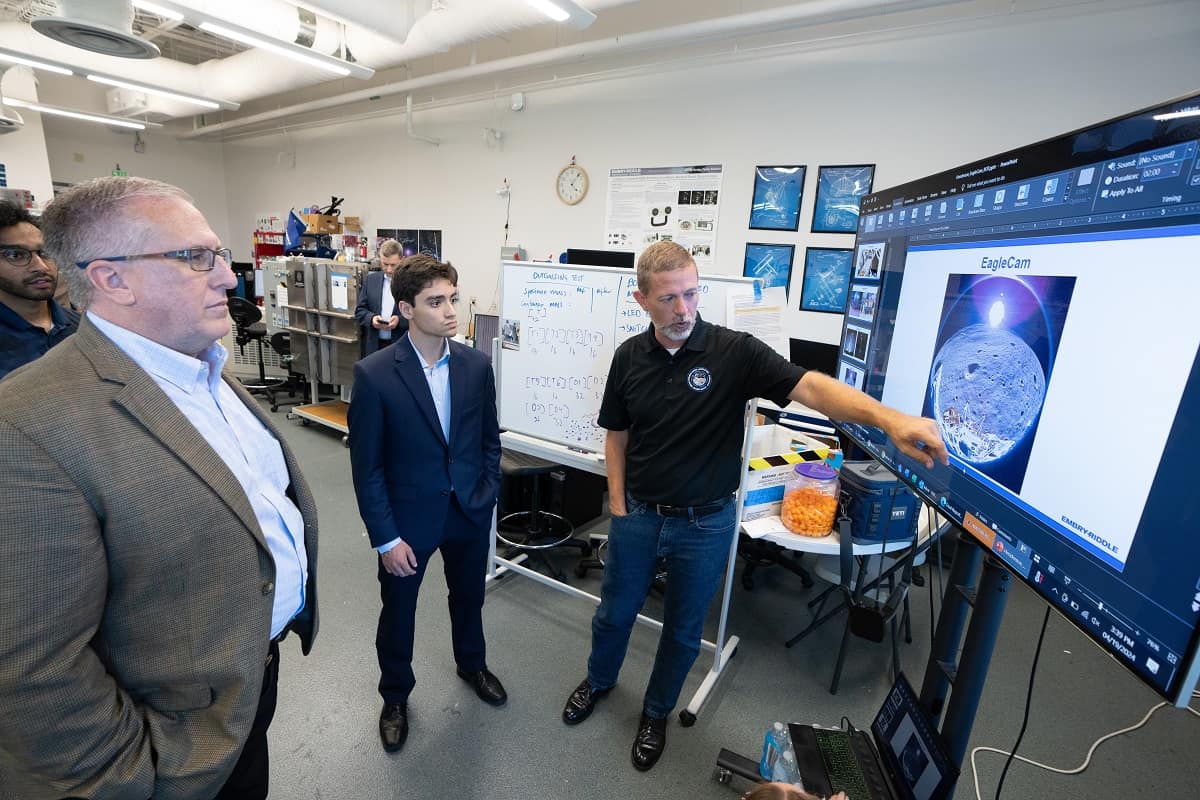Embry-Riddle Aeronautical University’s groundbreaking EagleCam project, a mini-satellite camera system, has earned prestigious recognition from the U.S. Senate after making history as the first of its kind to land on the moon. The project, which exemplifies student innovation and perseverance, recently garnered attention from the Senate, underscoring the significance of its achievement.

A Milestone Lunar Landing
The EagleCam, a testament to Embry-Riddle’s commitment to cutting-edge aerospace technology, made its historic journey to the lunar surface aboard Intuitive Machines’ Odysseus Nova-C class Lunar Lander in February. This landmark achievement marked a significant milestone in the university’s legacy of pushing boundaries and fostering student-led innovation in the field of space exploration. Barry Cotton, representing the central Florida district in the Office of U.S. Sen. Rick Scott, paid a visit to Embry-Riddle to commend the EagleCam team for their remarkable accomplishment. During the visit, Cotton had the opportunity to meet with the EagleCam team and explore the Space Technologies Laboratory, where the innovative device was conceived and constructed.
Honoring Student Ingenuity
Dr. Troy Henderson, faculty team lead for the EagleCam project, expressed his gratitude for the Senate’s recognition and highlighted the pivotal role of student leadership and ingenuity in bringing the project to fruition. From its inception, EagleCam was driven by the passion and dedication of students, reflecting Embry-Riddle’s ethos of empowering the next generation of aerospace pioneers. Henderson emphasized that EagleCam was not just a scientific endeavor but a testament to the university’s commitment to hands-on learning and experiential education. The project exemplifies Embry-Riddle’s interdisciplinary approach, fostering collaboration across various fields to tackle complex challenges in space exploration.
Exploring Future Frontiers
The visit by Scott’s team provided an invaluable opportunity to showcase Embry-Riddle’s cutting-edge facilities and state-of-the-art research capabilities. Touring the Daytona Beach Campus and the John Mica Engineering and Aerospace Research Complex (MicaPlex), Cotton and his colleagues gained insights into the university’s role as a hub of innovation and technological advancement in the aerospace industry.
Meeting with Embry-Riddle President P. Barry Butler and other university leaders, Scott’s team reaffirmed their commitment to supporting initiatives that promote STEM education and advance America’s leadership in space exploration. The EagleCam project serves as a testament to the transformative impact of hands-on learning experiences in inspiring the next generation of scientists, engineers, and space explorers.

As Embry-Riddle continues to push the boundaries of aerospace innovation, the recognition from the U.S. Senate underscores the university’s pivotal role in shaping the future of space exploration. The EagleCam project stands as a beacon of student achievement and academic excellence, embodying the spirit of innovation and discovery that defines Embry-Riddle’s legacy in the aerospace industry.
